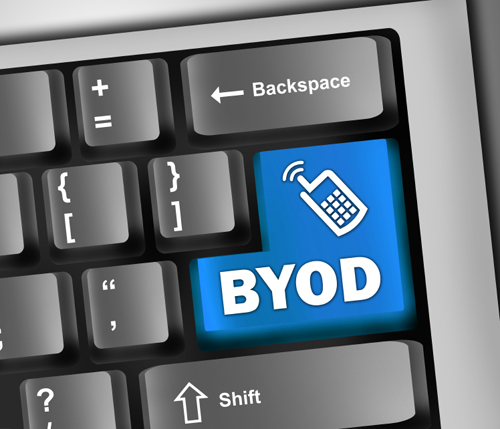Have you ever lost data? You heard your hard drive go crunch and that was that. Or you lost that USB stick that had all your holiday snaps. Or, you accidentally pressed Delete and happily confirmed that yes, you really wanted to do that – immediately before realising that you really didn’t.
Chances are that, as soon as you lost it you realised how valuable it was to you. Today we’re luckier in that cloud storage can to an extent mitigate for data loss, but when you really do lose data you realise how true is the technologists’ adage that data has no value unless it is backed up.
And when it is backed up – safe, secure, but accessible – it really has huge value. Today entire businesses are waking up to the reality that their data could be among their most valuable assets. They just need to realise this, and none more so than businesses that want to engage with mobile advertising.
Data growth
We’re awash with data. To put this into perspective: nearly 90% of the data in the world today was created in the last two years; and the world’s data will grow by fifty times in the next decade. Last year we helped the FT visualise a petabyte by explaining that a petabyte of MP3 music would last two thousand years non-stop, and a petabyte of mobile phone photos would stretch some 48,000 miles – roughly round the globe, twice.
But it’s not just about size. I’m of the view that the growth of mobile advertising is also down to the qualities of this data, that programmatic trading is bringing out the reach, transparency and efficiency that algorithms can unlock from big data.
Data types
In programmatic mobile advertising data is our stock in trade. Our algorithms use data to find the right audiences for the right ads and, having found them, to bid for them in a virtually instant auction, called Real-time Bidding. The ads you’re seeing on this page could easily have been placed through programmatic buying.
It’s important to understand what data we use, and why. I’ve written about contextual, first, second and third party data before here on Fourth Source but to recap quickly: contextual data comes from the publisher and describes an ad slot in terms of what the app or site is and where it’s being displayed; first-party data comes from the advertiser and is the profile they use to characterise the audiences they want to reach; second-party data comes from ad tech companies such as byyd, who draw inferences from billions of ads served daily, such as a user’s propensity to click certain ads, their age, their gender and so on; and third-party data is bolted on from external sources, for example weather or geolocation data.
It’s an incredibly heady mix that enables advertisers to move away from the ‘spray and pray’ approach – buying blocks of inventory from blind ad networks and hoping that somehow they reach the right people – to ‘focus and find’, in which data and algorithms combine to pinpoint audiences with precision.
Data value
Which brings me to ask you: what data do you have, and how can you use that for mobile advertising? Because if you’re in any way serious about employing every promotional tool in your marketing arsenal, you need to think about mobile advertising – and your data can become part of this mix.
Today entire businesses are waking up to the reality that their data could be among their most valuable assets.
For example, do you have any marketing databases that you’ve built yourself, from subscriptions or promotions, where people have given you permission to use their data? What about social data that you’ve accrued? How about entries to competitions, surveys or polls? Or, if you’re already up and running with digital, what about analytics data from your website, your mobile site, your mobile app?
Because, while you can certainly throw this data into an Excel spreadsheet and draw interesting pie charts, you could and should be considering using it for programmatic mobile advertising too. Therein lies even more value.
BYOD: Bring Your Own Data
From an adage to an acronym: in corporate IT departments, as well as discussing the value of non-backed-up data, they will also talk about BYOD. This means ‘Bring Your Own Device’, and is the latest buzzword describing how employees can use their own technology in the workplace.
At byyd, we use our own variant of BYOD; we call it ‘Bring Your Own Data’. It’s a call to all advertisers to examine what first-party data they own, which they can overlay onto our Precision Audience Engine, which feeds our data-hungry algorithms and finds the audiences you want to reach.
This is what Weve is doing for example. The joint venture between EE, Telefonica (O2), and Vodafone has a tremendously rich set of first-party data and now that it has licensed byyd’s platform, called Madison, it can use this to buy inventory across the entire market.
And we know that BYOD works. It’s the mechanism we used for our Sony Xperia Z1 campaign in which, by plugging data in from the market research company On Device Research, we could identify which users had and had not been exposed to the campaign and measure their reactions through on-screen polling. In so doing we proved that mobile advertising works, for example by raising spontaneous brand awareness from 37% to 60%, and increasing likelihood to convert from 49% to 64%.
Publish? Advertise!
It’s all adages and acronyms today: another adage that came with social media was ‘everyone is a publisher now‘, a recognition that businesses could start using their content to publish directly to the web without the barriers of cost or complexity.
So now we can add that programmatic mobile advertising means ‘everyone can be an advertiser too’. You just need to realise and unlock the value of your own first-party data. You just need to BYOD.






